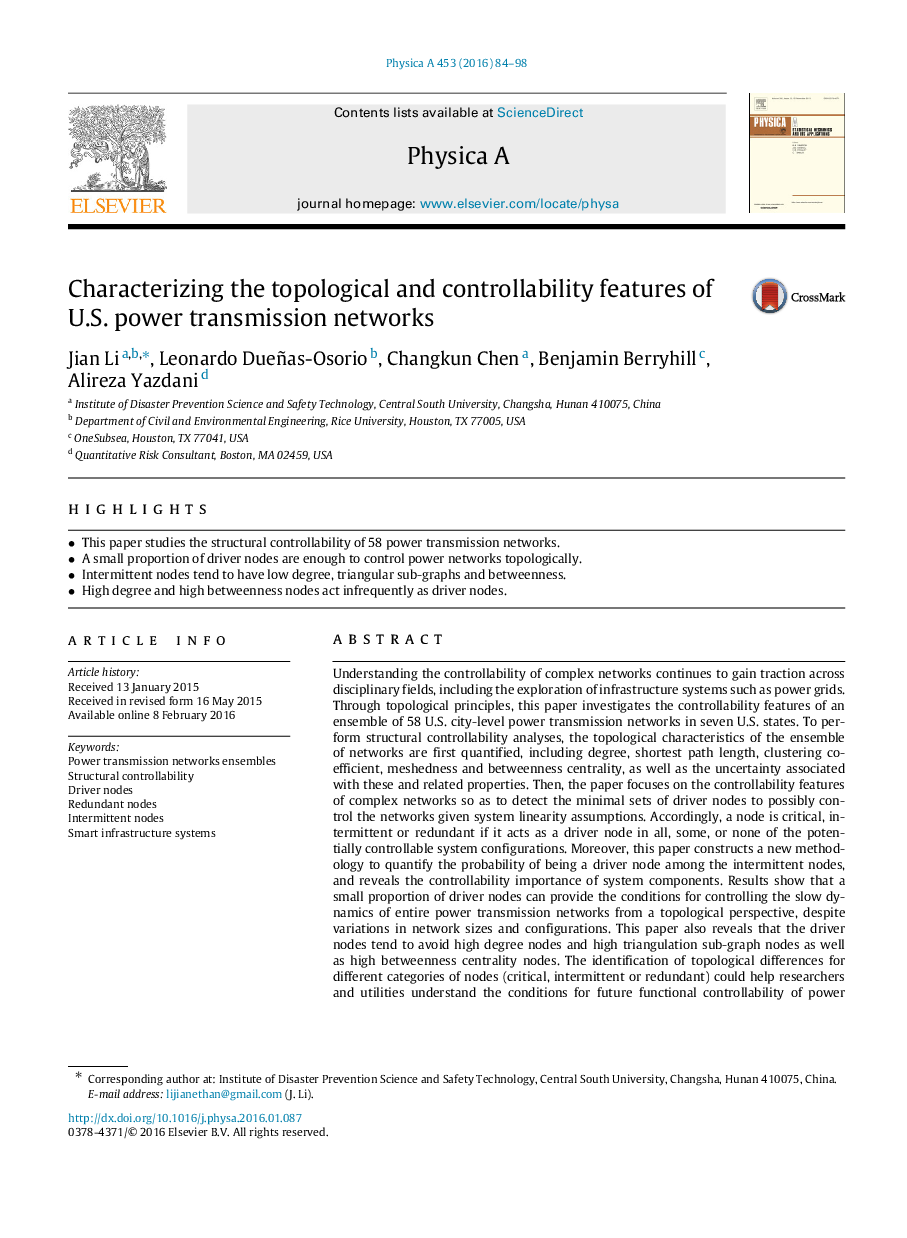| کد مقاله | کد نشریه | سال انتشار | مقاله انگلیسی | نسخه تمام متن |
|---|---|---|---|---|
| 973636 | 1480120 | 2016 | 15 صفحه PDF | دانلود رایگان |
• This paper studies the structural controllability of 58 power transmission networks.
• A small proportion of driver nodes are enough to control power networks topologically.
• Intermittent nodes tend to have low degree, triangular sub-graphs and betweenness.
• High degree and high betweenness nodes act infrequently as driver nodes.
Understanding the controllability of complex networks continues to gain traction across disciplinary fields, including the exploration of infrastructure systems such as power grids. Through topological principles, this paper investigates the controllability features of an ensemble of 58 U.S. city-level power transmission networks in seven U.S. states. To perform structural controllability analyses, the topological characteristics of the ensemble of networks are first quantified, including degree, shortest path length, clustering coefficient, meshedness and betweenness centrality, as well as the uncertainty associated with these and related properties. Then, the paper focuses on the controllability features of complex networks so as to detect the minimal sets of driver nodes to possibly control the networks given system linearity assumptions. Accordingly, a node is critical, intermittent or redundant if it acts as a driver node in all, some, or none of the potentially controllable system configurations. Moreover, this paper constructs a new methodology to quantify the probability of being a driver node among the intermittent nodes, and reveals the controllability importance of system components. Results show that a small proportion of driver nodes can provide the conditions for controlling the slow dynamics of entire power transmission networks from a topological perspective, despite variations in network sizes and configurations. This paper also reveals that the driver nodes tend to avoid high degree nodes and high triangulation sub-graph nodes as well as high betweenness centrality nodes. The identification of topological differences for different categories of nodes (critical, intermittent or redundant) could help researchers and utilities understand the conditions for future functional controllability of power networks while improving their reliability and resilience as well as facilitating their transition into smart grid systems.
Journal: Physica A: Statistical Mechanics and its Applications - Volume 453, 1 July 2016, Pages 84–98
